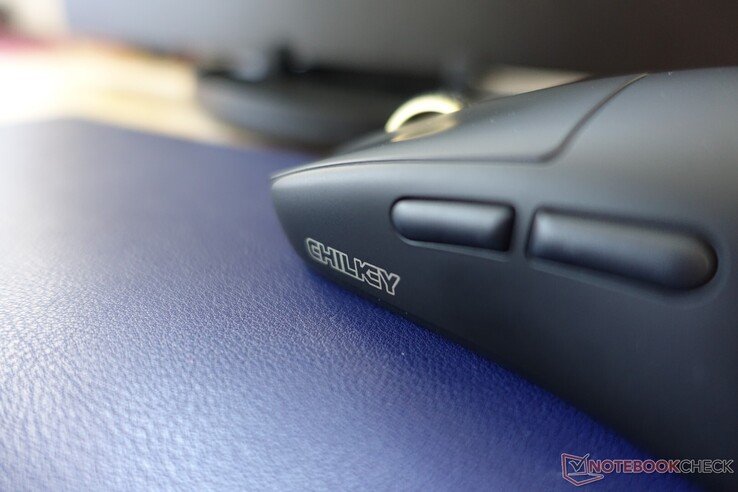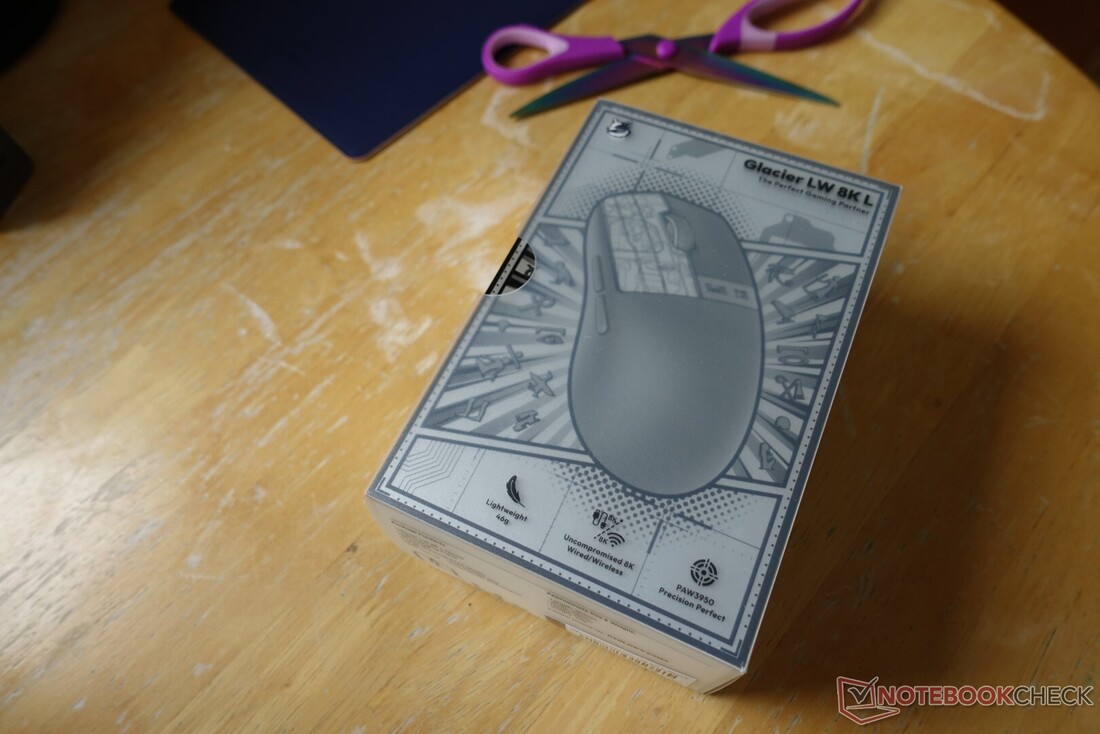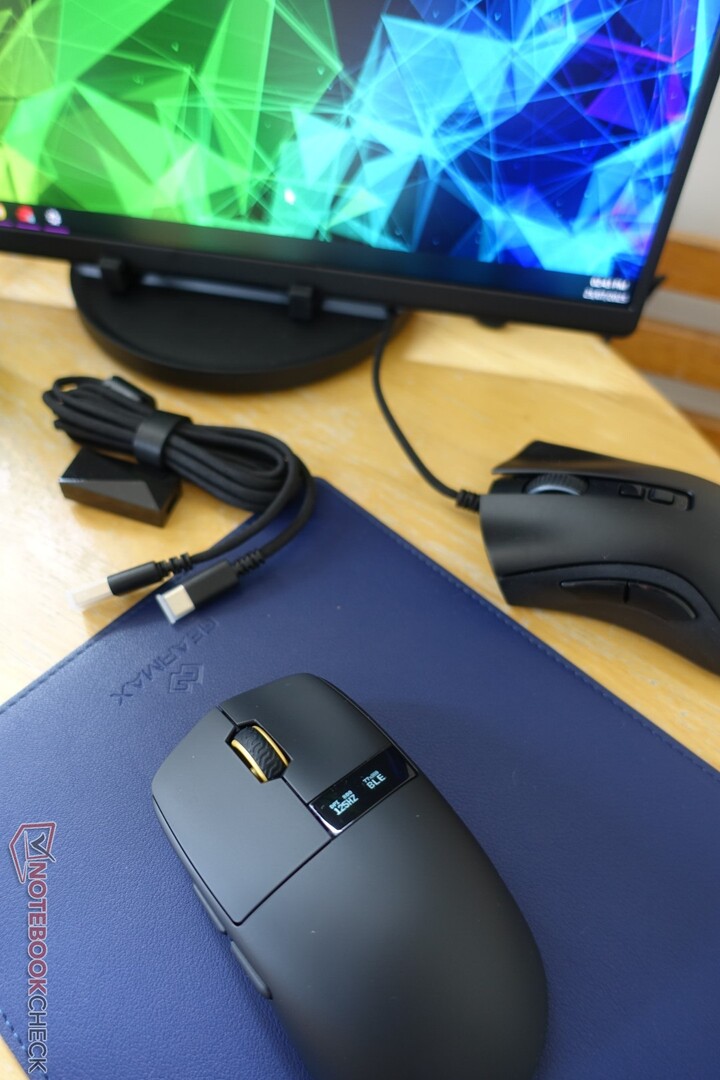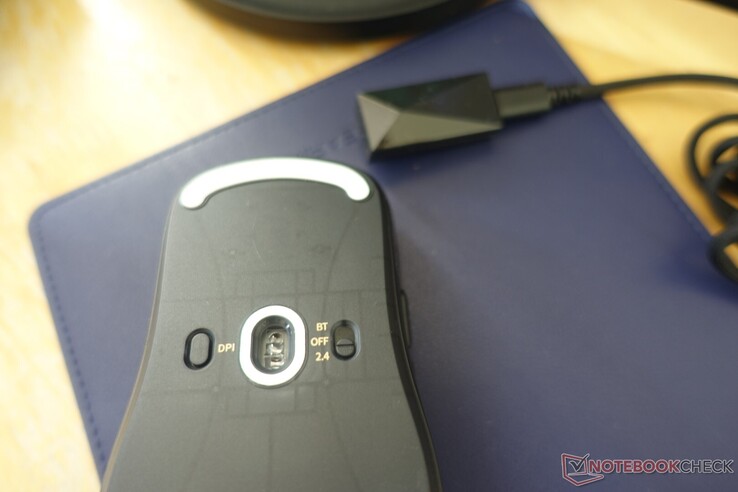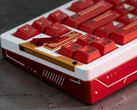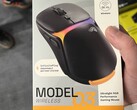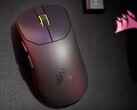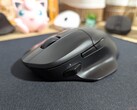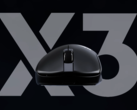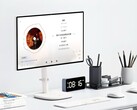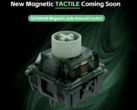Verdict - Lightweight mouse acts (but might not look) the part
Chilkey pitches its new Glacier LW 8K L as "the perfect gaming partner", although I have found it to be a better productivity partner, with some light gaming on the side.
It is markedly lighter than my Razer mouse, and is enjoyable to use in its wireless modes as a result. It seems equally responsive as either a BLE or 2.4G peripheral, even though the latter requires its dongle.
The cable also elevates the presentation, as it is braided and comes with its own tie and connector covers. It is not USB-C to C, although that does not matter as both the mouse and dongle have type-C ports. On that note, I was pleased to learn that the dongle works when plugged into an external display as well as its connected PC itself, meaning it can work with type-A port that always goes unused on one's monitor.
Its packaging gives the impression of transparent-effect tech, although that is not apparent save for a very subtle circuit board effect on its bottom. Its predecessor came in a purple Mystique colorway that would have fit that bill, but it is not available in this new L variant.
On that note, I thought the black unit I have would look better as the display would blend in more seamlessly, but now I wonder if the effect of its standing out against the only other white option would actually be better.
Besides that, I have found that it can show fingerprints, even in black, and I would prefer if the display stayed on constantly in any color. (Also, one of the side buttons has acquired an inexplicable (and inexplicably indelible) white mark already.)
It integrates Chilkey's own "Blue Ghost" optical switches, which are backed for improved durability. I can't speak to that supposed effect at this stage, though. The switches have not really stood out in any other way thus far, besides making me think that their sound is distinct, yet inoffensive. They are sharp and to the point in use, more or less in line with the OEM's claims of "zero-delay actuation and error-free precision".
Pros
Cons
Price and availability
Chilkey has released its new "feather-light" mouse via Kickstarter, starting at $79 (or 20% off its eventual retail price) from today (August 19, 2025).
Chilkey, a peripherals brand whose ND75 keyboard made it as a finalist in the 2025 European Hardware Awards has made a new version of its Glacier LW 8K mouse with a mass pared down to just 47 grams (g, as opposed to 49g in the original). Both variants are rated to pack all of the same potential advantages, the up-to-30,000 DPI PixArt PAW3950 sensor found in better-known Razer mice included.
Specifications
| Technical Data | Chilkey Glacier LW 8K L |
|---|---|
| Weight (gross) | 47g |
| Size | 119.9×63.2×37.8 millimeters (mm) |
| Sensor | PixArt PAW3950 |
| MCU | Nordic 52840 |
| Maximum polling rate | 8,000Hz (via the 2.4Ghz receiver) |
| Minimum rated response time | 0.125 milliseconds (ms) per signal. |
| Switch type | Optical, Chilkey Blue |
| Scroll Wheel Encoder | TTC |
| IPS | 750 |
| Other features | Anti-slip feet with optional extras; optional grips; physical DPI and wireless toggles; LCD display |
Unboxing & First Impressions
The OEM has aimed for a premium, yet cyberpunk, appeal with its packaging. It even comes with a frosted outer shell over the bold graphics of its main box, all of which are monochrome. The mouse is well packaged with separate compartments for things like its seemingly high-end cable, which is USB-A to -C in order to serve the USB-C dongle that also comes in the box.
The dongle itself has an angular design that makes up for its glossy black plastic finish. It is accompanied by a Chilkey-branded badge and stickers, and (more importantly) sets of extra grips and feet.
Design & Build Quality
The LW 8K L looks exactly like its older Glacier silbing, as Chilkey clearly intended. It is, however, also as light as intended, which might make it feel a little cheap on first use, especially to those unused to intentionally lightweight mice (like me).
The reduced mass does contribute to a sense of speed, and also makes it easier to use on a variety of surfaces, regardless of how amenable they are to mouse use - even couch cushions, if necessary.
It looks like any other mouse finished in black plastic, in all honesty - except of course that it integrates its own little screen, located just under the right button. The display is LCD, but reminds me of the Chargeasap Flash Pro's OLED display nonetheless.
It indicates the LW 8K L's modes (Bluetooth ("BLE"), Wi-Fi ("2.4G") or wired ("USB-C")), DPI and battery level, the last of which is a little hard to see as it is squashed in above the 'mode' characters.
Its read-out is monochrome and easily visible from a decent variety of angles, even though the display cover is extremely glossy and can obscure it under direct glare. One of its few major drawbacks is that it flickers to a noticeable degree when the mouse is in wired mode, even though that is hard to capture well on camera.
The other is that it times out at the drop of a hat, then lights back up at random, seemingly whenever the system deigns to activate it.
Performance
The Glacier LW 8K L performs as one might expect a lightweight mouse to behave, although its speed can be modulated by switching its sensitivity via the button found on the bottom of the peripheral. It can be adjusted through 400, 800, 1,600, 3,200, 6,400 and 30,000 DPI stages, the latter of which can indeed feel excessively skittish on older or lower-powered PCs.
The mouse is also supposed to achieve a polling rate of up to 8,000Hz (hence the constant "8K" buzzword). The spec depends on the connection as well as the PC in question, meaning the value can fall to as little as 124Hz on something like a Legion Go.
Despite that disappointment, that makes it more of an asset while gaming - or would, if it had more buttons. As it is, it has 2 left-side buttons to go with its obligatory main right/left controls and clickwheel, the latter of which is perhaps louder than one might prefer in a premium product.
Overall, the LW 8K L is clearly built for speed, although it comes with optional feet to fine-tune that if necessary.
Ergonomics
Chilkey asserts that the Glacier (L variant or otherwise) shape is optimized for the most versatile grip (the "fingertip" or claw" types included, apparently) compatibility, although I found it so generic as to be more suited to conventional palm-centric use, to be honest.
It is easy on the hand even in prolonged use - unless I had to use it in cramped conditions.
The OEM claims to have conferred different "weights" on the main buttons, in that the left one is supposed to be 3g lighter than the right in order to "significantly" reduce "fatigue". I have not noticed this effect to date: it seems to be equally easy to click either button over time, and they even sound the exact same.
The Glacier also seems resistant to slipping out of the hand, even in this relatively hot weather (ambient temperature is currently ~@25°C). Chilkey has thrown grips into the box just in case.
Battery Life
The Glacier LW 8K L is rated to last for up to 100 hours on 2.4G, which definitely held true over testing for that long. Its display is less than reliable in reflecting that, though: for example, it will happily jump from 79% to 99% on being plugged in to use over USB-C, then show 89% the next time it is switched on.
Basically, I am concerned for the mouse's battery health over time now.
Transparency
The selection of devices to be reviewed is made by our editorial team. The test sample was given to the author by the manufacturer free of charge for the purposes of review. There was no third-party influence on this review, nor did the manufacturer receive a copy of this review before publication. There was no obligation to publish this review. As an independent media company, Notebookcheck is not subjected to the authority of manufacturers, retailers or publishers.





